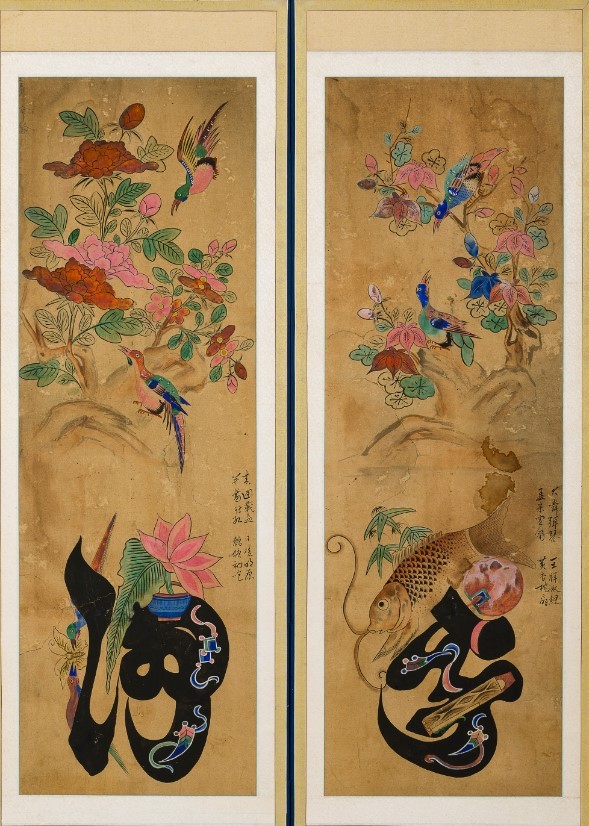 |
A Chaekgeori painting from the late 19th century (Horim Museum) |
Horim Museum is holding an exhibition introducing paintings on books and letters as the first installment of its three-part series on folk paintings from the Joseon era (1392-1910).
The exhibition “The Scenery of Bookshelves Chaekgeori and Munjado” held at the Sinsa branch of Horim Museum, located in Gangnam, southern Seoul, showcases nearly 40 paintings of “chaekgeori” and “munjado” from the Joseon era as the first engagement of its “minhwa” exhibition series. Minhwa refers to Korea’s folk painting style that prospered during the late Joseon era.
Chaekgeori and munjado are parts of minhwa that translate as “books and things” and “letter paintings,” respectively. They originated from court paintings, but were widely enjoyed among people regardless of social class later on.
The exhibition consists of three parts: chaekgeori, munjado and munjado-style paintings that were newly created by modern and contemporary artists in Korea, including Lee Ung-no and Son Dong-hyun.
Chaekgeori paintings began to develop since the times of King Jeongjo, the 22nd king of Joseon, who ruled the country from 1776 to 1800. The paintings usually depict books, a variety of scholars’ ornaments, and fruits displayed on bookshelves.
 |
A part of an eight-fold folding screen from the early 20th century which depicts samgang-oryun, the three principles and five disciplines of Confucius (Horim Museum) |
“Chaekgeori paintings show how much the people back in the era had valued learning by drawing bookshelves,” Ryu Jin-hyun, senior curator of the museum, told The Korea Herald. “But they added some imagination to the paintings by including fruits such as peaches and grapes. Usually a peach symbolizes longevity while grapes means fertility.”
An excerpt from the book on the collected words of King Jeongjo on display at the exhibition -- “It is said you could feel happy just by touching (books) although you may not read them. I realized what this means after seeing Chaekgeori paintings” -- shows how King Jeongjo was fascinated by Chaekgeori paintings.
Munjado paintings drawn on eight folding screens show “samgang-oryun,” the three principles and five disciplines of Confucianism, which refer to filial piety, brotherly love, loyalty, trust, propriety, righteousness, integrity and sensibility. A letter that symbolizes each meaning combined with an illustration is shown on the eight folding screens.
“Minhwa exhibition is popular among Koreans as many currently enjoy drawing minhwa as a hobby,” said Ryu. “The exhibition was scheduled to run until July 31, but we might postpone the closing date to early August thanks to the popularity.
The museum held its previous minhwa exhibition in 2013, which proved highly popular. Its brochures sold out at the time, according to the museum.
The museum will showcase its minhwa paintings, collected over the past seven years, throughout the three sessions. After the exhibition of chaekgeori and munjado paintings, “hwajohwa” of flower and bird paintings and “sansuhwa” of landscape paintings will each follow in August and November.
By Park Yuna (yunapark@heralcorp.com)









![[Today’s K-pop] Blackpink’s Jennie, Lisa invited to Coachella as solo acts](http://res.heraldm.com/phpwas/restmb_idxmake.php?idx=644&simg=/content/image/2024/11/21/20241121050099_0.jpg)